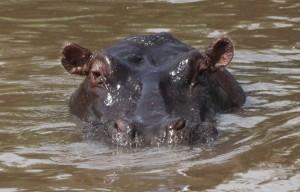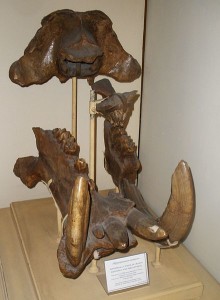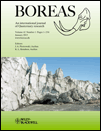THE SHRINKING HIPPOS OF ANCIENT EUROPE
THE SHRINKING HIPPOS OF ANCIENT EUROPE
Giant German hippopotamuses wallowing on the banks of the Elbe are not a common sight. Yet 1.8 million years ago hippos were a prominent part of European wildlife, when mega-fauna such as woolly mammoths and giant cave bears bestrode the continent. Now palaeontologists writing in Boreas, believe that the changing climate during the Pleistocene Era may have forced Europe’s hippos to shrink to pygmy sizes before driving them to warmer climes.
“Species of hippo ranged across pre-historic Europe, including the giant Hippopotamus antiquus a huge animal which often weighed up to a tonne more than today’s African hippos,” said lead author Dr Paul Mazza from the University of Florence. “While these giants ranged across Spain, Italy and Germany, ancestors of the modern Hippo, Hippopotamus amphibius, reached as far north as the British Isles.”
Hippos were a constant feature of European wildlife for 1.4 million years, during the climatically turbulent time of the Pleistocene era, which witnessed 17 glacial events. The experience of such environmental changes would not have been without cost, and Dr Mazza and co-author Dr Adele Bertini, also from Florence, investigated the impact this changing climate may have incurred.

The research focused on fossils from across Europe, ranging from the German town of Untermaßfeld in Thuringia, to Castel di Guido, North of Rome, and Collecurti and Colle Lepre in Italy’s Central Eastern Marche province. The fossils were compared to a database of measurements taken from modern African and fossil European hippos.
“The German fossil from Untermaßfeld is the largest hippo ever found in Europe, estimated to weigh up to 3.5 tonnes,” said Mazza. “The Collecurti specimen was also large, but interestingly even though it was close in both time and distance to the Colle Lepre specimen the latter specimen was 25% smaller. A final specimen, an old female from Ortona in central Italy, was smaller again. It was 17% smaller than the Collecurti fossil and approximately 50% lighter.”
The team found that a clear size threshold separated hippo specimens which heralded from different parts of the Pleistocene age. The hippos from the early Pleistocene were the largest ever known while smaller specimens emerged during the middle Pleistocene. Larger specimens briefly reappeared during the late Pleistocene.
“We believe the size difference was connected to the changing environmental conditions throughout the Pleistocene,” said Mazza. “The Ortona hippo, the smallest of the specimens, lived in a climate where glacial cycles turned colder, while cold steppes replaced warm ones across the Mediterranean.”

The drop in temperature and rainfall during the Pleistocene caused significant changes to plant life across Europe resulting in an expansion of grassy steppes. Being grazers hippos may have been expected to thrive in this new environment. Unexpectedly they appeared to shrink, only re-attaining their past size during the warm periods of the late Pleistocene, when forests and woodland re-colonised the steppes.
During their time in Europe hippos were forced to live in habitats influenced by a general environmental trend towards cooler and drier conditions. In response hippos achieved giant sizes during warmer and relatively more humid stages, but became smaller, and even very small, under non-ideal environmental conditions.
“While hippos are normally considered indicators of warm, temperate habitats this research shows that temperature was not only the controlling factor for their ancient ancestors,” concluded Mazza. “Our research suggests other factors, such as food availability, were equally important. Appreciating the importance of factors beyond temperature is of great significance as we consider how species may adapt to future ecological and environmental changes.”
This study is published in the Boreas.

Mazza. P, Bertini. A, “Were Pleistocene hippopotamuses exposed to climate-driven body size changes?” Boreas, Wiley, October 2012, DOI: 10.1111/j.1502-3885.2012.00285.x
Boreas has been published since 1972. Articles of wide international interest from all branches of Quaternary research are published. Biological as well as non-biological aspects of the Quaternary environment, in both glaciated and non-glaciated areas, are dealt with: Climate, shore displacement, glacial features, landforms, sediments, organisms and their habitat, and stratigraphical and chronological relationships.
Founded in 1807, John Wiley & Sons Inc, is a global provider of content and content-enabled workflow solutions in areas of scientific, technical, medical, and scholarly research; professional development; and education.
* Photo courtesy of Wiki – licensed under Wikipedia Commons
